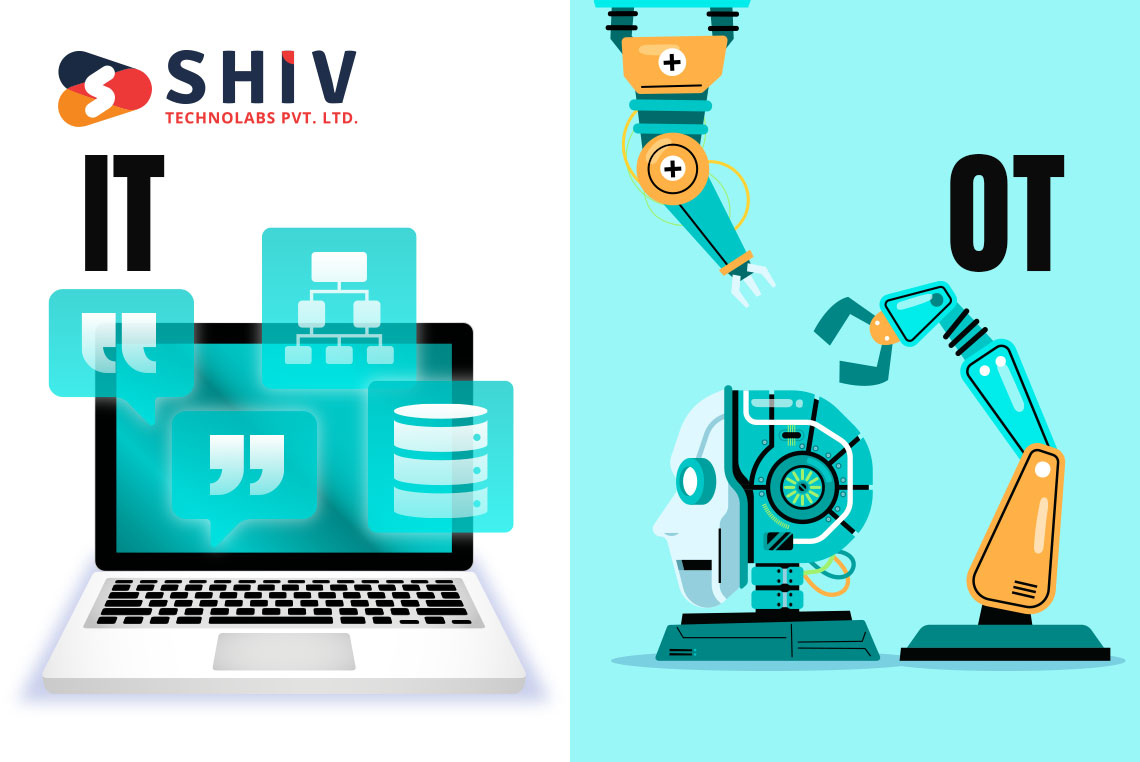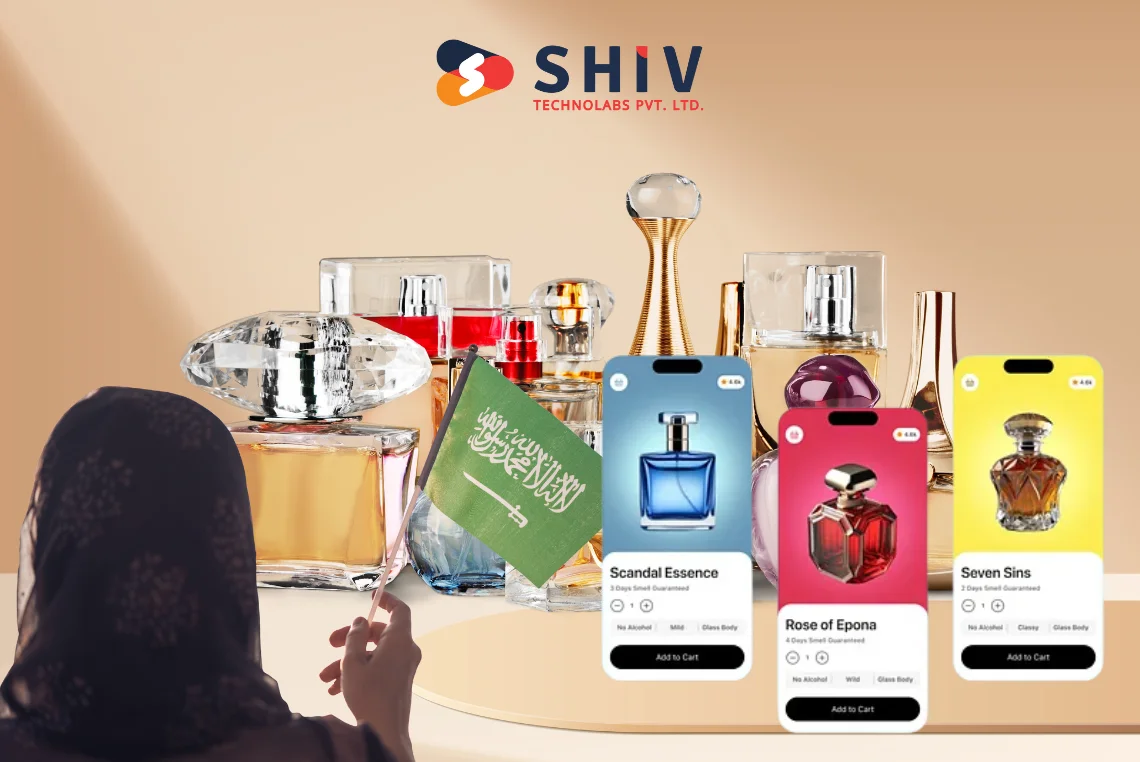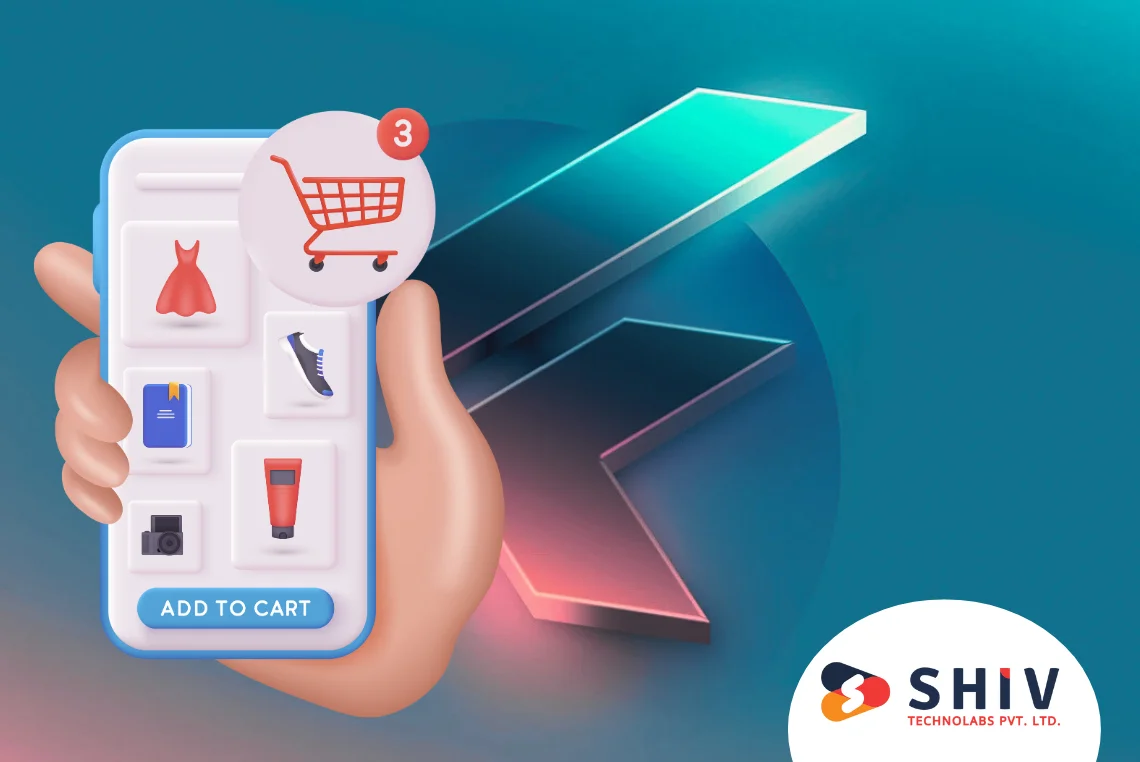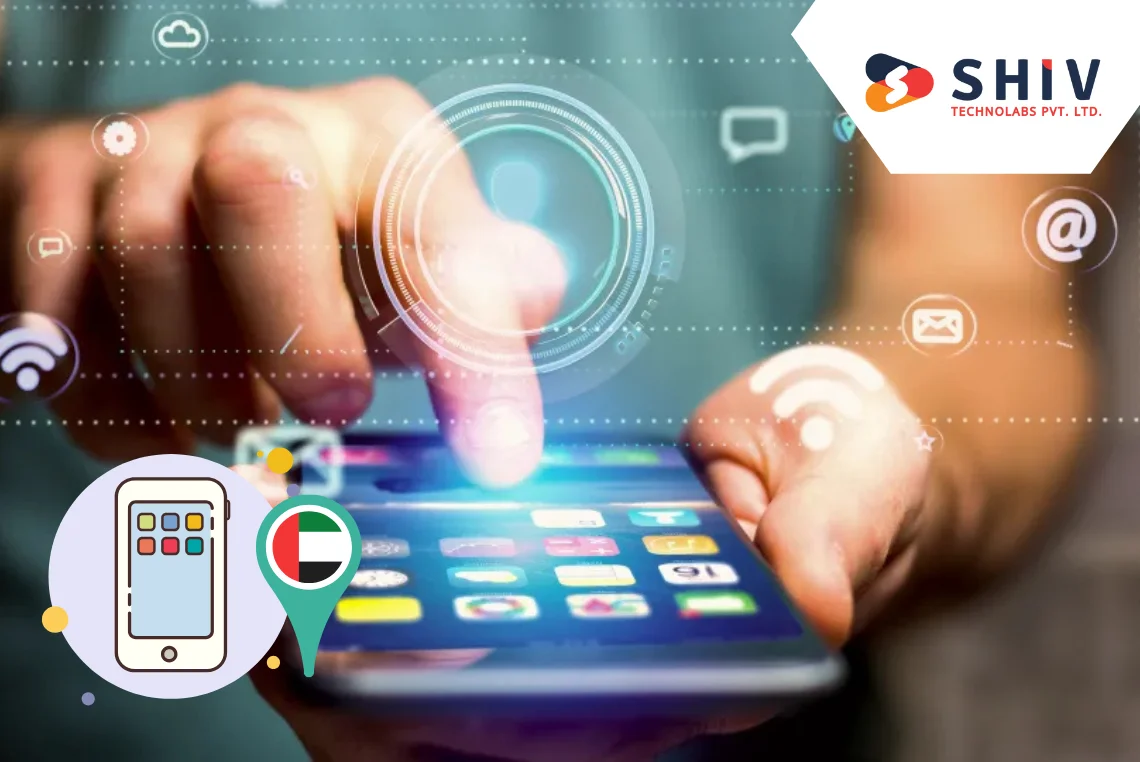Table of Contents
The 2022 Smart Production Solutions (SPS) fair showcased the latest industrial automation trends. A major theme of this event was IT/OT convergence, which implies the intertwining and integration between Information Technology & Operational Technology. This will lead to a new era in manufacturing processes, which is a smooth data exchange from enterprise to shop floor.
This Post discusses the top 10 IT/OT convergence trends showcased at SPS 2022, revealing game-changing solutions for future industrial automation.
Background: IT/OT convergence
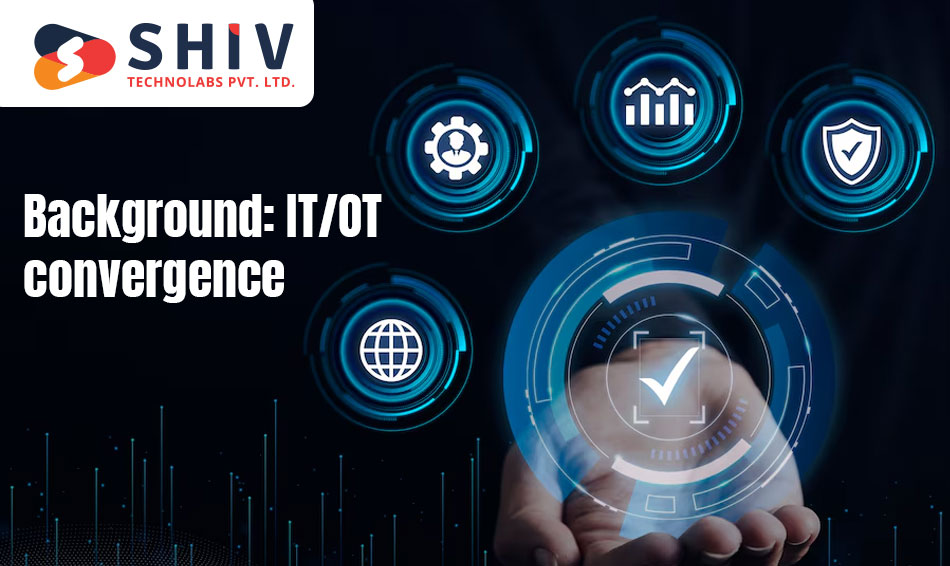
We are seeing increased interest and movement towards IT/OT convergence in manufacturing because of the tremendous potential for improving manufacturing through IT technologies. Because of market dynamics, which have caused the world to be increasingly competitive, OT has had to start considering these IT technologies more than ever before due to increasing competitiveness in the market. The first phase of achieving IT/OT convergence involves creating (secured) interfaces between IT systems and OT.
But in recent times, IT/OT convergence has become increasingly identified with IT technologies penetrating the OT world. The IT world’s technologies can promote OT instruments’ efficiency and operations. The digital advancements in IT have led to better storage capacity, improved analytical capabilities, and faster processing speed.
As a result, these technologies can help improve productivity and decision-making at the OT levels and lead to greater collaboration among various organizational stakeholders. This may also enhance supply-chain integration, facilitate energy management, improve customer experience, boost productivity, and create new business models for IoT App Development Company operating under this framework.
Top 10 IT/OT convergence trends at SPS 2022
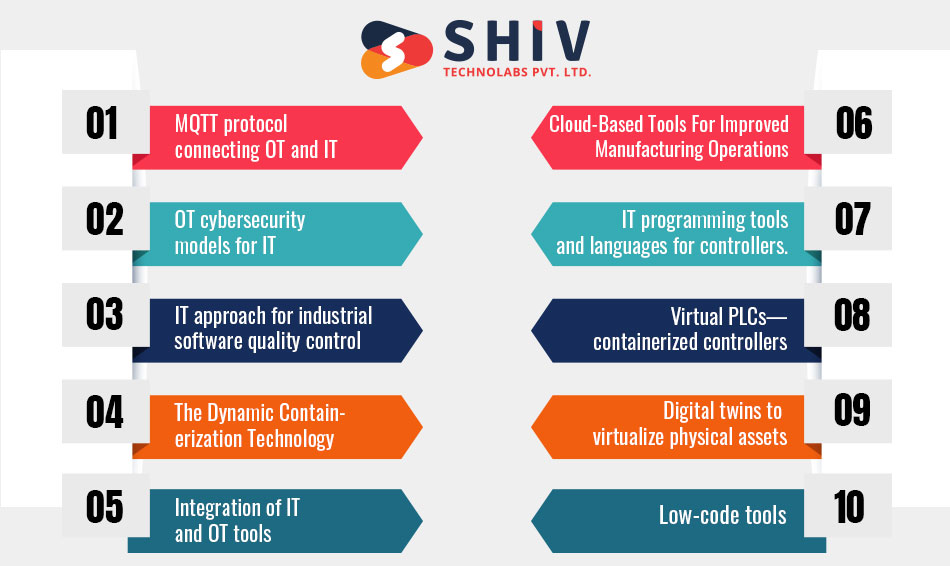
Over at SPS 2022, we detected ten trends that point to a strong industry emphasis on IT/OT convergence. Here is a brief abstract of the above IT/OT convergence trends.
1) MQTT protocol connecting OT and IT
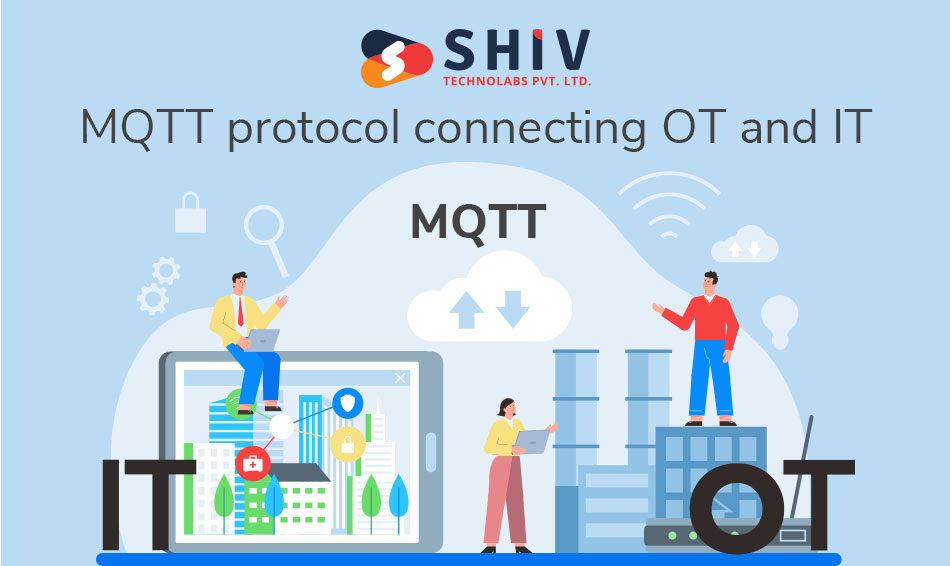
Recently, MQTT has been seen as the common protocol used in last-mile connectivity between OT assets and IT/Cloud systems. SPS demonstrated MQTT’s importance with OPC-UA on the lower levels of the automation pyramid, for example. In this regard, Matrikon, a premier OPC-UA vendor, showcased its new product, “Matrikon Data Broker,” which allows sending plant data in factories to the cloud via MQTT. Concerning customer trends, a Matrikon attendant mentioned at their stand that cloud-based pub/sub-type communication (with MQTT being the main protocol) is presently in demand by consumers.
HiveMQ emphasized the advantages of MQTT, one of the prominent independent MQTT brokers, at the event. In collaboration with the Eclipse Foundation, HiveMQ has developed MQTT Sparkplug, which introduces a standardized data format and enables devices to be discovered out-of-the-box.
With more MQTT brokers in the market, some of them are free. HiveMQ emphasized its scalability to millions of devices, built-in tools for monitoring data flow and messages, and a robust security feature set. In general, Matrikon’s architecture is the OPC-UA. The OPC-UA tunneler, however, transforms an OPC-UA to a classic OPC setting while the data broker now supports MQTT for sending data to the cloud.
2) OT cybersecurity models for IT
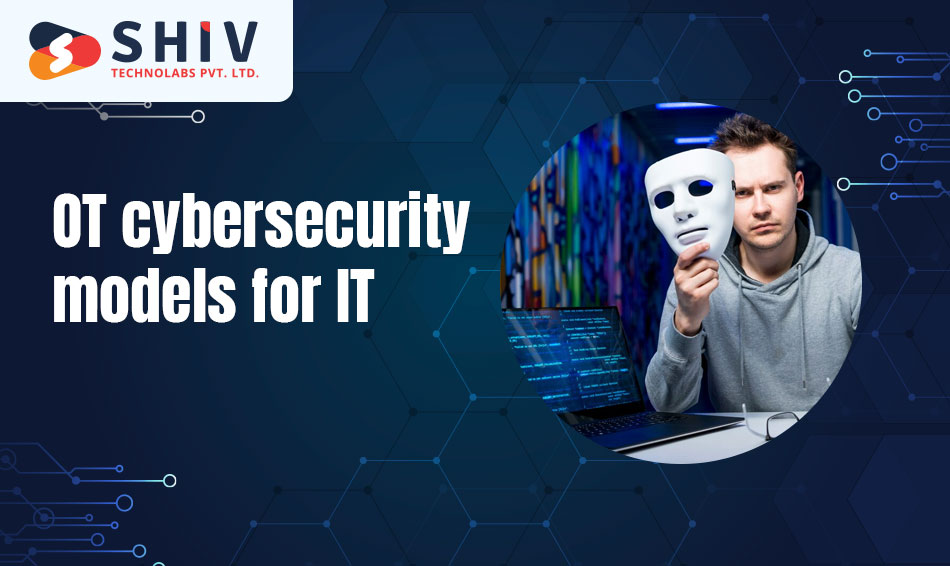
The “Zero trust” security principle of Zscaler, which was developed for IT, was demonstrated by the company in OT environments. Siemens and Zscaler have expanded the “Defense-in-Depth” concept of OT that Zero Trust Architecture secures. Zero Trust is a principle that allows the least-privileged access to only those specific applications authenticated by user identity and context.
The process can be achieved by installing Zscaler Private Access, a cloud-based remote access IoT App Development Services app connector on a docker container running in Siemens Scalance LPE (local processing engine), to create an industrial environment that accesses the IoT App Solution.
This is how it can look from the cloud through the manufacturing floor. It is based on a secure ISA95 security architecture with nested edge and integrated HoloLens, as demonstrated by Microsoft, Moxa, and Swiss Smart Factory.
3) IT approach for industrial software quality control
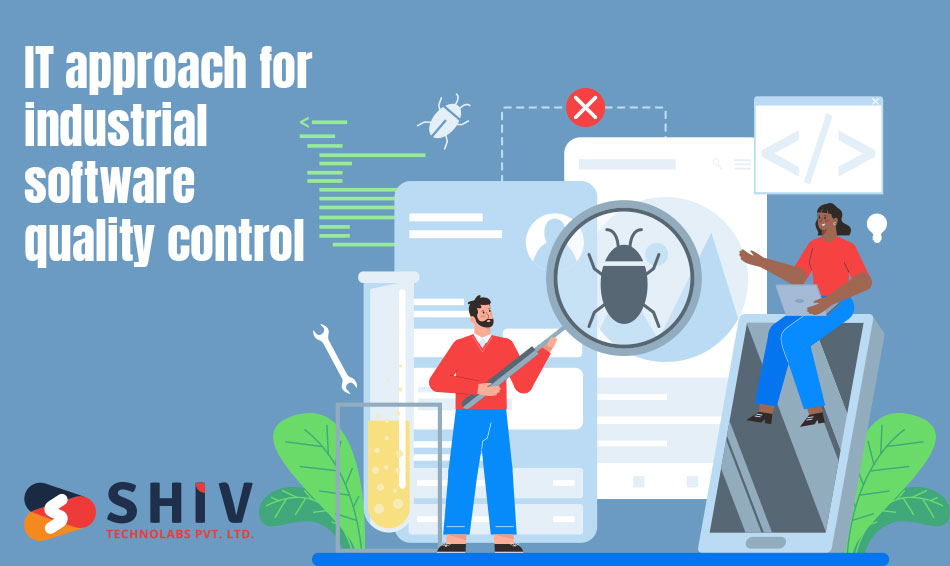
At the fair, the PLCopen association announced its intention to have a working group that would come up with guidelines for assessing PLC software quality through metrics. Whether mentioned or not, this step signifies a paradigm shift in how established IT techniques are embraced for OT system software quality assurance. In computer science, software metrics have been used as empirical approaches to evaluating software quality.
The purpose of this association is to provide guidelines on incorporating a metric-based assessment of PLC software’s inherent value into various aspects of workflow procedures for all stakeholders involved in machine and plant engineering.
4) The Dynamic Containerization Technology
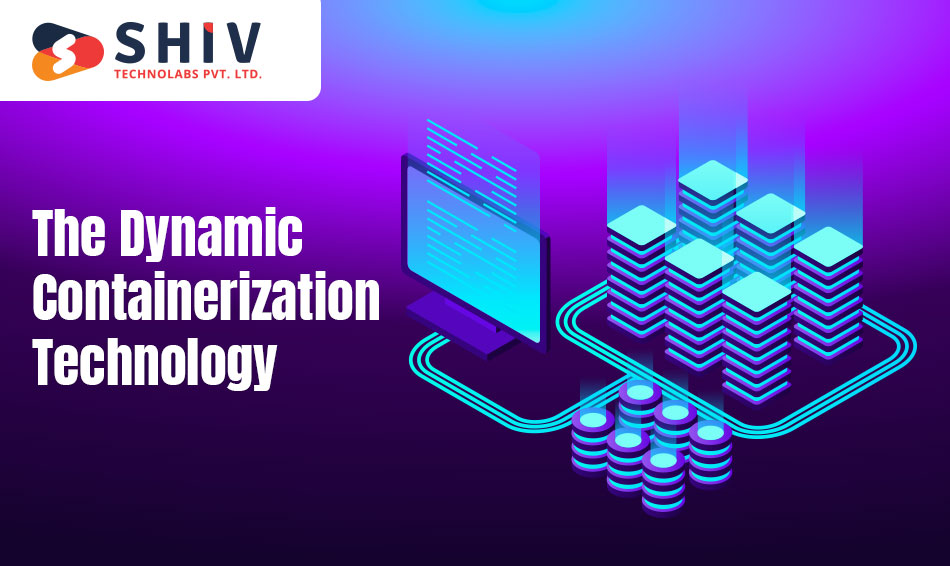
Containerized edge workloads were prominently featured by vendors like Siemens, Lenze, Belden, Flecs, MathWorks, and Wago. During the event, Siemens announced its new Industrial Edge Management system, based on open-source Kubernetes connected to the cloud. A MATLAB Docker Image for SALZ Automation GmbH PLC/IPC was showcased at the MathWorks stand.
There were also PFC200 Series Controllers from Wago, which can run applications inside Docker. Softing presented its new edgePlug FANUC CNC application, made specifically for running in a containerized environment on Siemens Industrial Edge and meant to read machine and manufacturing data from FANUC CNCs.
5) Integration of IT and OT tools
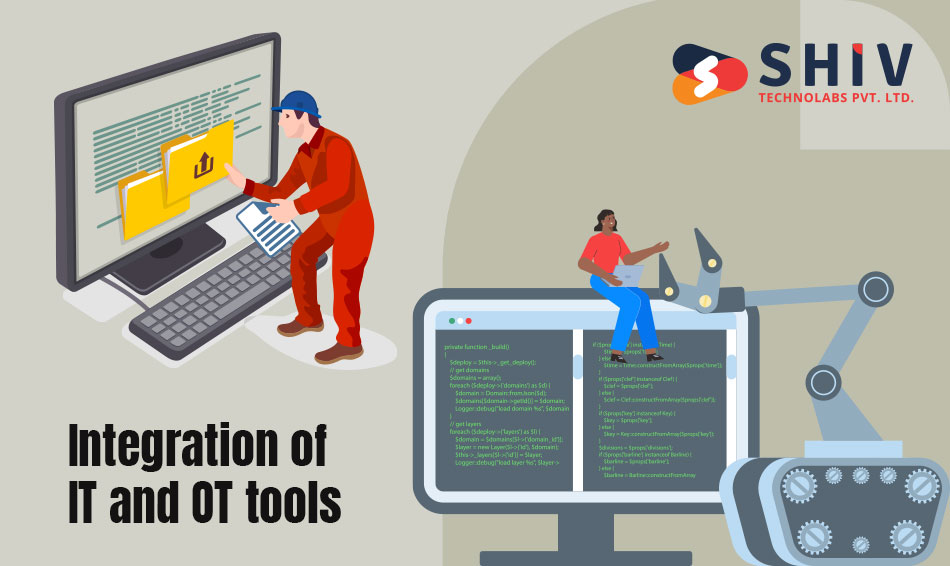
Despite the creation of unified solutions through IT and OT in convergence by several vendors and solution providers, one direction that stands out is how IT and OT companies work together to build integrated solutions. At the exhibition, Schneider Electric emphasized its new cooperation with SAP. The two companies intend to provide “seamless integration for common industrial customers” between their IT and OT offers. A case in point was a closed-loop intelligence asset management system with augmented reality using automation tools such as EcoStruxure Augmented Operator Advisor.
The company exhibited its partnership with thin-edge.io to the public while displaying how much easier it has been to transmit from cloud to edge. thin-edge.io is an open-source and cloud-agnostic edge framework that caters to IoT edge devices that are limited in resources.
It can be run on hardware such as small, embedded Linux devices with low RAM footprint or large, multi-core industrial servers (IPC). It also supports multiple programming languages and wants to offer out-of-the-box connectivity, security, privacy, and device management options on any device it is deployed on.
6) Cloud-Based Tools For Improved Manufacturing Operations
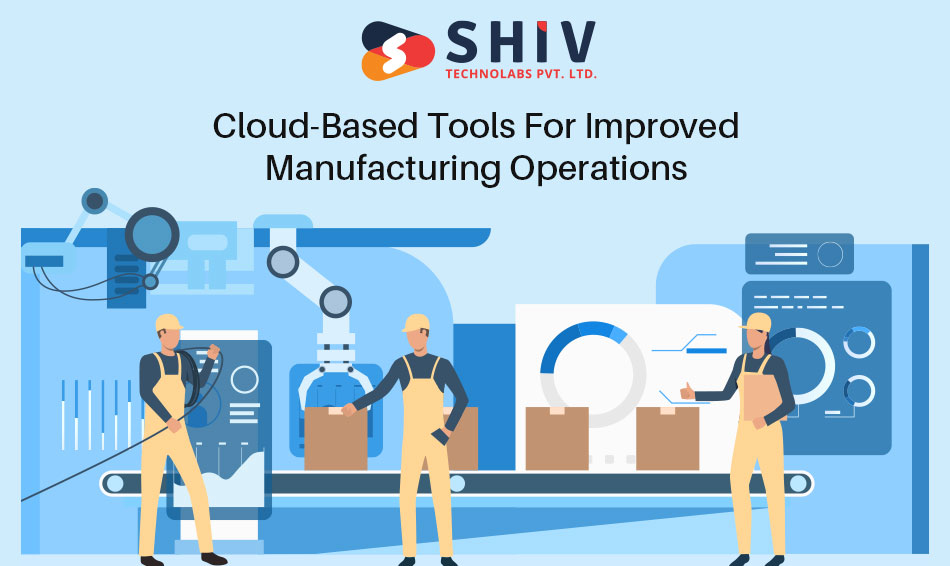
Siemens has given an update on their “Siemens Xcelerator,” a digital transformation platform with open access. It comprises a prepared range of IoT-oriented software and hardware, a partners’ ecosystem, and a marketplace. Siemens will transform its entire range of software and hardware into modular, cloud-based ones in combination with standard APIs (application programming interfaces). To add to the portfolio, Siemens keeps including new (SaaS) cloud-supported products while expanding its partner network.
The ecosystem now has 60 partners. One of the partners at the fair was Blue Automation GmbH, which exhibited virtual commissioning of a machine with Siemens executable Digital Twin. Virtual commissioning allows us to see if machines, other industrial equipment, or entire processes will function as intended in the design phase.
It simulates and helps detect erroneous designs early before anything is commissioned on the plant floor. Belden also demonstrated its new cloud-based SaaS “Horizon” edge platform. These include secure remote access (SRA), persistent data network (PDN), edge orchestration, data monitoring, and anomaly detection. The edge orchestration part lets users install and manage other edge applications on one or more devices, either locally or remotely.
7) IT programming tools and languages for controllers.
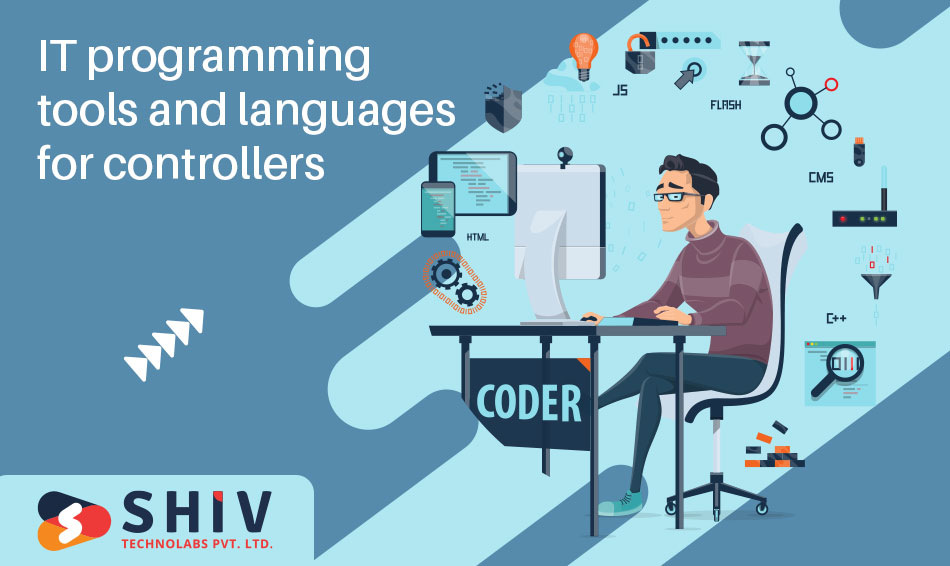
There is a noticeable rise in the number of IT programming tools available to OT programmers. Even IT programming languages like Python or Java are becoming more fashionable. For instance, Siemens has unveiled (V18) its TIA portal (a platform for writing control logic) with more IT-oriented workflows. Most notably, the Automatic Xpansion development environment is now cloud-based and based on Microsoft Visual Studio Code and is therefore compatible with the GitLab version control system.
Schneider Electric unveiled the Automation Expert software, which, in Schneider’s parlance, is a software-centric approach to PLC programming. This is a shared source runtime execution engine based on the IEC 61499 standard, which UniversalAutomation.Org developed. The code for Automation Expert created could be deployed in seconds onto third-party controllers such as Phoenix Contact.
8) Virtual PLCs—containerized controllers

Following the current trends in soft PLCs, it was apparent that SPS has shown that there is a shift towards virtual PLCs because “virtual” means hardware independent and not only control-hardware agnostic but IT-hardware agnostic (means that can run on commodity IT server rather than specialized controllers).
Soft PLC pioneer Codesys introduced their new virtual PLC offering – Codesys Virtual Control SL. One of them had one of its pilot customers replacing physical controllers with Codesys Virtual PLCs, containerized environments running in an IT server with a VMWare stack. They also included start-ups such as Xentara, Software Defined Automation, Logiccloud, and others who exhibited their virtual and soft PLCs.
9) Digital twins to virtualize physical assets
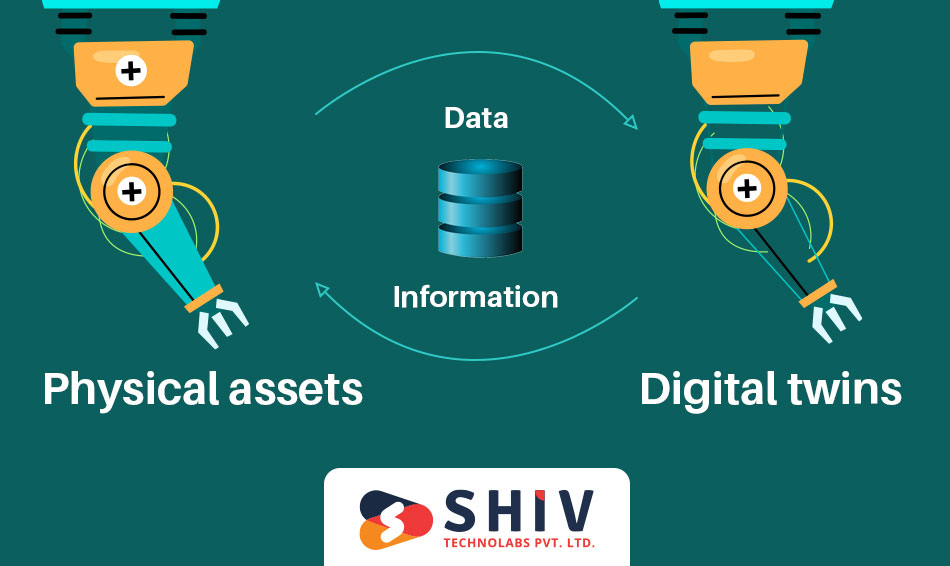
Unlike IT/OT convergence, digital twins see IT embracing OT in a virtualized environment. Industrial Digital Twin Association demonstrated use cases of its asset administration shell (AAS). This is an AAS, a digital representation of an asset comprising sub-models that describe its functionalities, parameters, and data.
One example was energy monitoring with a digital twin, where software code does not have to be changed when users switch devices. An open automation platform called Nupano has been unveiled by Lenze, which will provide machine builders with an overview of their machines, which are viewed as digital twins with corresponding apps on top.
10) Low-code tools
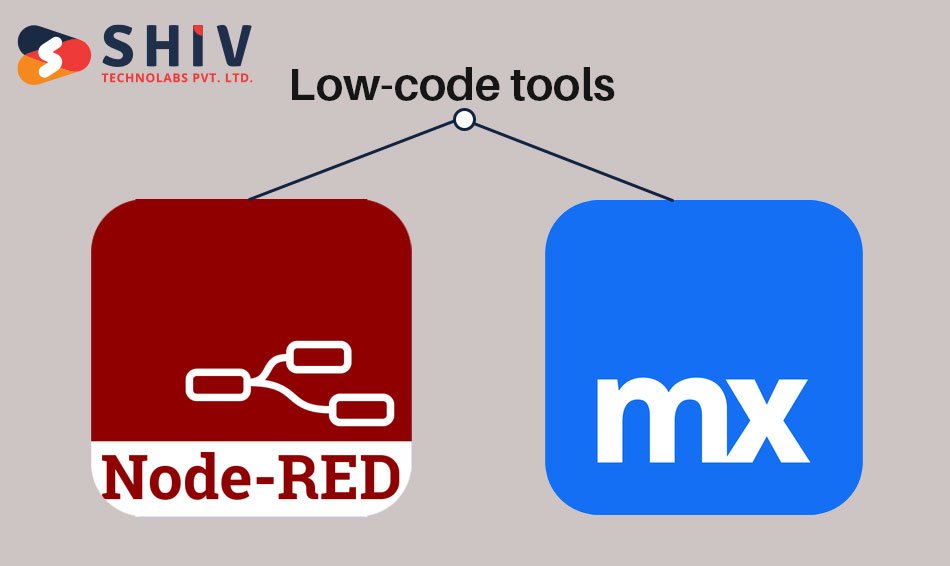
There were several low-code development platforms at the fair, such as low-code tools such as Node-Red or Mendix (Siemens). Low-code development platforms are visual software development environments that reduce the need to write code and the time spent building and deploying applications.
Siemens showed a simple example of using Mendix to build “low-code” applications for Industrial Edge. Start-up 36zero Vision had its booth featuring a visual assembly verification system in a low code environment (via Lanner IPC on Bosch Rexroth Ctrl X). Another start-up, Appollo Systems, showcased its drag-and-drop low-code tool at the Bosch Rexroth stand. Peakboard had advertised their “Low Code Tool” for building production dashboards.
Conclusion:
It had been demonstrated by the SPS Fair 2022 that IT/OT convergence could be transformational, as it displayed innovative technologies and new trends changing industrial spaces. The top 10 trends unveiled by the SPS Fair 2022, ranging from edge computing to artificial intelligence (AI) driven analytics, cybersecurity, and sustainability initiatives, give a sneak peek into what the future holds for Industry 4.0. When organizations adopt such IT/OT convergences, it helps to make them efficient, agile, and competitive in an increasingly interconnected world.

